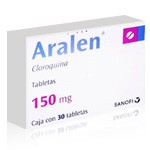Scleroderma: Understanding, Managing, and Treating a Complex Autoimmune Disorder


Scleroderma is a rare, chronic autoimmune disorder marked by the hardening and tightening of the skin and connective tissues. The condition, which literally means "hard skin," arises when the immune system mistakenly attacks the body, triggering abnormal collagen production. While its most visible effects are on the skin, scleroderma can also severely impact internal organs such as the lungs, heart, kidneys, and digestive tract, making it a potentially life-threatening condition.
What Is the Main Cause of Scleroderma?
The precise cause of scleroderma is unknown, but researchers believe it results from a combination of genetic, environmental, and immune-related factors. Like many autoimmune diseases, scleroderma occurs when the body’s immune system becomes hyperactive and begins to attack healthy tissue. This process leads to inflammation and an overproduction of collagen, the main structural protein in skin and connective tissues.
Some people may have a genetic predisposition, but scleroderma itself is not directly inherited. Instead, certain genes may increase susceptibility, particularly when combined with environmental triggers. These triggers might include viral infections, certain medications, or prolonged exposure to silica dust and other chemicals. Hormonal influences may also play a role, as scleroderma is significantly more common in women than in men.
Early Symptoms: What Were Your First Signs of Scleroderma?
The first signs of scleroderma often vary between individuals, depending on the type and extent of the disease. For many, the earliest symptom is Raynaud’s phenomenon, a condition where fingers and toes turn white or blue in response to cold or stress due to abnormal blood vessel constriction. This can precede other symptoms by months or even years.
As the disease progresses, patients may notice tight, shiny patches of skin on the fingers, hands, face, or forearms. Swelling in the fingers and hands, often accompanied by stiffness or pain, is another hallmark early symptom. Fatigue, heartburn, difficulty swallowing, and shortness of breath may also emerge early, particularly in cases where internal organs are involved.
Because scleroderma affects multiple systems, early signs may be dismissed as unrelated issues or misdiagnosed. For example, fatigue and joint pain might initially resemble rheumatoid arthritis or lupus. The diagnosis is usually confirmed through a combination of clinical examination, blood tests for autoantibodies, and imaging studies.
Different Forms and Progression of Scleroderma
Scleroderma is typically categorized into two main types: localized and systemic. Localized scleroderma primarily affects the skin and sometimes the underlying muscles or bones, but it does not involve internal organs. It is more common in children and generally has a better prognosis. The most recognized forms of localized scleroderma are morphea and linear scleroderma.
Systemic scleroderma, or systemic sclerosis, is more serious and affects the skin as well as internal organs. It is further subdivided into limited cutaneous systemic sclerosis, which affects the skin of the face, hands, and lower arms, and diffuse cutaneous systemic sclerosis, which can involve more extensive skin areas and organs like the lungs, heart, and kidneys.
The course of systemic scleroderma varies greatly. Some individuals experience slow progression with manageable symptoms, while others suffer rapid decline and serious complications. Pulmonary arterial hypertension, interstitial lung disease, heart failure, and renal crisis are among the most severe outcomes in systemic forms.
Life Expectancy with Scleroderma
The life expectancy of someone with scleroderma depends largely on the type and severity of the disease, particularly the extent of internal organ involvement. For patients with localized scleroderma, life expectancy is usually normal, as this form does not compromise vital organs.
In systemic sclerosis, the outlook is more complex. Advancements in diagnosis and treatment have improved survival rates significantly over recent decades. However, systemic involvement can reduce life expectancy, especially when the lungs, kidneys, or heart are severely affected.
According to recent studies, about 80–90% of individuals with systemic scleroderma survive at least 5 years after diagnosis. Ten-year survival rates range from 60% to 80%, depending on various factors. Patients with limited cutaneous systemic sclerosis tend to have better outcomes than those with the diffuse form. The presence of autoantibodies such as anti-Scl-70 and anti-RNA polymerase III may also be linked to more aggressive disease and worse prognosis.
It is important to note that early diagnosis, routine monitoring, and proactive management of complications can make a substantial difference in outcomes.
Does Scleroderma Go Away?
Scleroderma is a chronic condition with no known cure. The course of the disease is often unpredictable. In some individuals, the symptoms stabilize or even partially improve over time, especially in localized cases. In others, the disease progresses slowly or rapidly, causing increasing disability and health complications.
Skin thickening in diffuse scleroderma may improve spontaneously after several years, but this does not necessarily mean that internal damage has halted. For many, long-term management is required to address complications and improve quality of life.
Treatments aim to slow progression, relieve symptoms, and prevent complications. Because the disease is so variable, care must be personalized and often involves a team of specialists — rheumatologists, pulmonologists, dermatologists, nephrologists, and others depending on the organs involved.
Treatments and the Role of Aralen (Chloroquine)
Treatment of scleroderma is symptom-based, focusing on managing specific complications. For example, proton pump inhibitors may be prescribed for reflux, vasodilators for Raynaud’s, and immunosuppressants for lung or skin involvement.
Among disease-modifying agents, hydroxychloroquine (Plaquenil) and chloroquine (Aralen) are antimalarial drugs that have been repurposed for autoimmune diseases like lupus and rheumatoid arthritis. Aralen, in particular, plays a supportive role in managing certain aspects of scleroderma.
Although Aralen is not a first-line treatment for systemic sclerosis, it may be used in patients with overlapping autoimmune features—especially when symptoms resemble those of lupus or dermatomyositis. It helps modulate the immune response, reducing inflammation and slowing disease activity. In patients with scleroderma who experience arthritis, skin rashes, or fatigue, Aralen may help relieve these systemic symptoms.
Moreover, Aralen has a favorable safety profile compared to some stronger immunosuppressants, making it an attractive option for long-term use in certain individuals. However, it is not without risks. Prolonged use requires regular eye exams due to the potential for retinal toxicity. Kidney and liver function should also be monitored.
In more aggressive cases, other immunosuppressive agents such as mycophenolate mofetil, cyclophosphamide, or rituximab are often preferred. Recently, newer therapies like nintedanib and tocilizumab have shown promise in reducing lung fibrosis and inflammation.
Coping with the Emotional and Physical Impact
Living with scleroderma can be physically and emotionally exhausting. Chronic pain, fatigue, disfigurement, and disability may interfere with work, relationships, and day-to-day activities. Mental health support, including counseling and support groups, is crucial for managing depression and anxiety that often accompany the disease.
Rehabilitation therapies, such as physical and occupational therapy, can improve joint flexibility, mobility, and independence. Skin care is essential to manage dryness and ulcers, and patients are often advised to avoid cold exposure and smoking, both of which can worsen vascular symptoms.
Diet and nutrition also play a supportive role. Some patients may benefit from dietary adjustments to manage gastrointestinal symptoms, while others may need high-calorie diets if they are losing weight due to digestive issues.
Final Thoughts
Scleroderma is a multifaceted disease that defies easy classification or treatment. Its variable course means that two patients may have entirely different experiences with the same diagnosis. Early detection, individualized care, and a holistic approach to management are the cornerstones of improving both survival and quality of life.
While scleroderma does not “go away,” it can be managed effectively, especially when complications are anticipated and treated proactively. The role of medications like Aralen highlights how older drugs can still serve a purpose in modern autoimmune care, particularly when tailored to a patient’s unique needs.
Ongoing research into the molecular mechanisms of scleroderma continues to shed light on potential new therapies. With advancements in immunology and personalized medicine, there is hope for more targeted and effective treatments on the horizon. Until then, awareness, timely intervention, and compassionate care remain the most powerful tools in the fight against this complex condition.
Medically Reviewed by Dr. Faride Ramos, MD
(Updated at Jun 27 / 2025)

